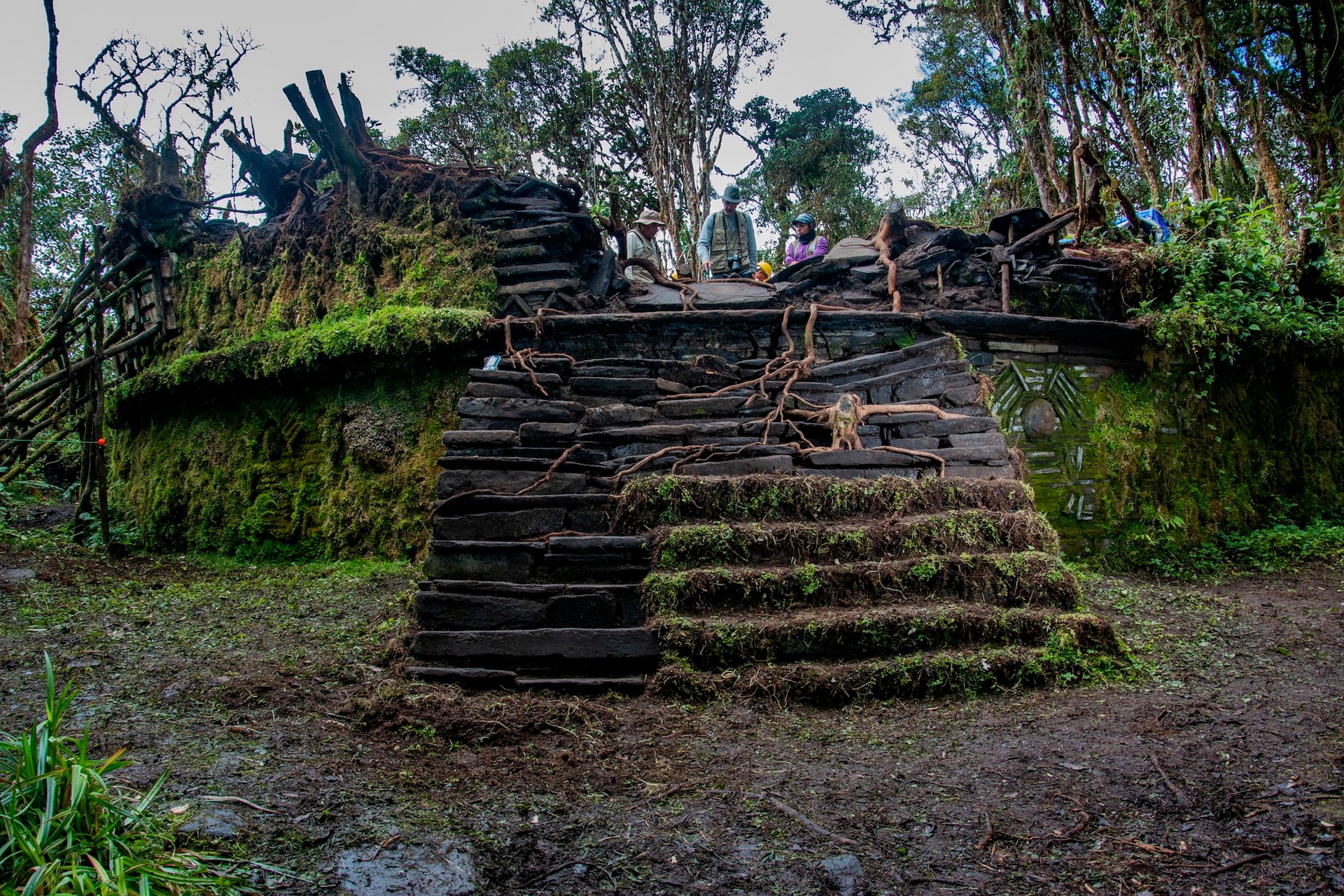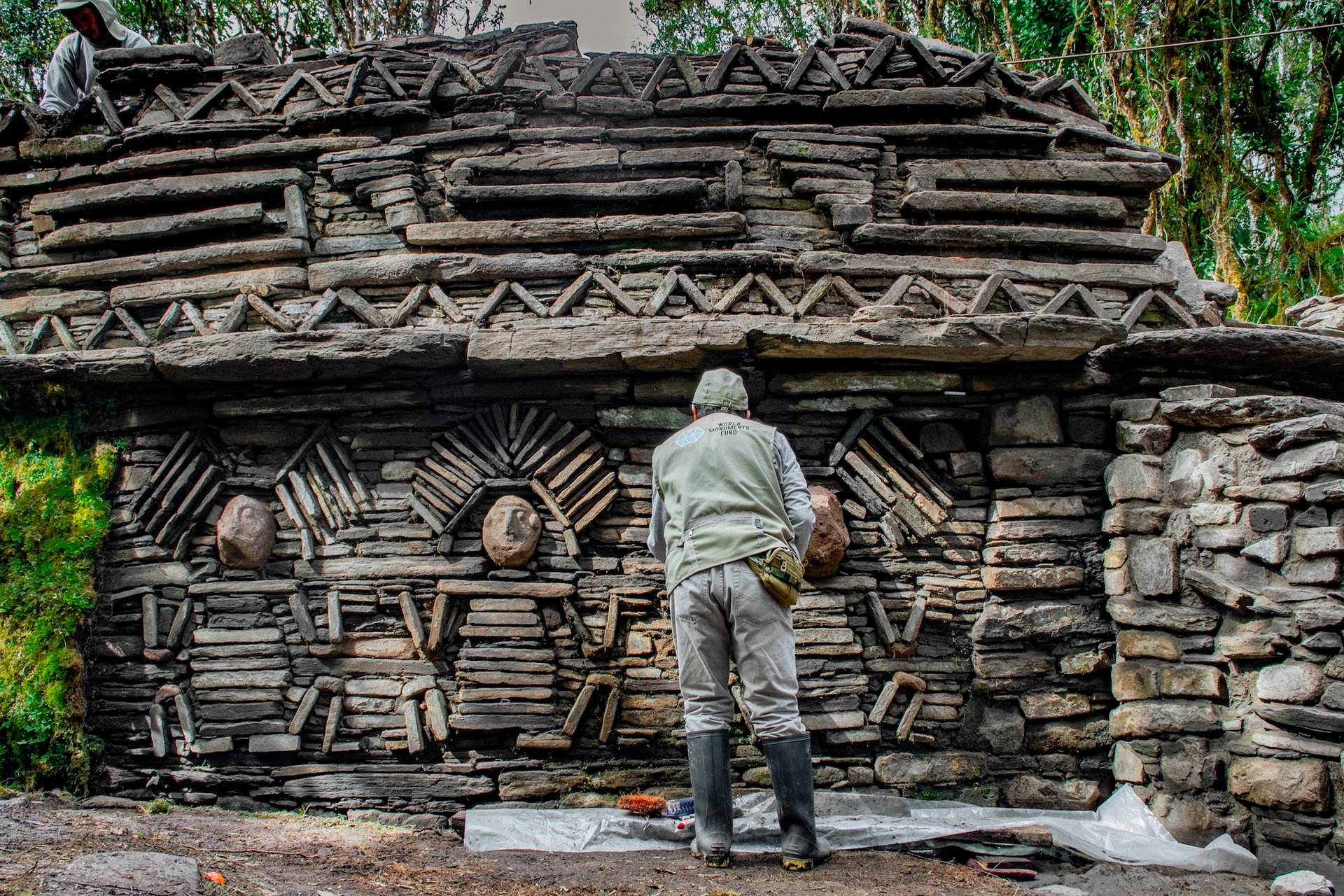Researchers working in Peru have found greater than 100 beforehand unknown constructions on the Gran Pajatén archaeological advanced, an historic website situated inside Río Abiseo Nationwide Park, 500 km north of Lima. The park is a Unesco Blended World Heritage website, and well-known for the ruins left by the Chachapoya, a civilization that lived within the northeastern Andes of Peru from the seventh to the sixteenth centuries.
“Everybody on the crew could be very excited,” says Juan Pablo de la Puente, the manager director of the World Monument Fund in Peru. “Contributing to a deeper understanding of the Chachapoya legacy is each a duty and a privilege. Certainly, it’s an awesome duty we Peruvians must the world.”
Buildings on the Los Pinchudos website in Río Abiseo Nationwide Park Courtesy World Monuments Fund
In addition to figuring out greater than 100 archaeological constructions—considerably increasing on the 26 buildings identified because the Eighties—the crew revealed that the Chachapoya lived at Gran Pajatén from a minimum of the 14th century. In addition they carried out fieldwork on a community of pre-Hispanic roads that join websites throughout the Río Abiseo Nationwide Park.
“Though specialists suspected that the extension of Gran Pajatén was larger, our findings had been sudden—not solely by way of scale, however in how they reframe the position and significance of the positioning,” De la Puente says. “We now know that Gran Pajatén was not a distant ceremonial outpost, however moderately a central node in an articulated territorial system that included key websites like Cerro Central, Los Pinchudos, La Playa, Papayas, amongst others. These findings affirm that the Chachapoya created a classy and interconnected community of settlements within the cloud forest certain collectively by a shared cultural id and a strategic understanding of the panorama.”

{A partially} excavated staircase at a construction at Gran Pajatén throughout a 2024 expedition Courtesy World Monuments Fund
Found within the Sixties, Gran Pajatén is situated on a ridge with defensive and symbolic significance to the Chachapoya and options high-relief friezes and ceremonial buildings adorned with stone mosaics. “The architectural format, the visible prominence of the positioning and its connection to close by websites by a community of historic roads recommend that it served ceremonial, administrative and social features alongside the river Montecristo Valley,” De la Puente says. “It was seemingly a non secular centre and a cultural waypoint—an expression of how the Chachapoya organised and navigated their setting.”
As a result of a lot of the positioning is roofed by thick forest, till these latest investigations, students had been unable to solutions questions on Gran Pajatén’s measurement, operate and size of occupation. “This discovery was made attainable because of the archaeological exploration on the website, which was accompanied by non-invasive applied sciences comparable to Lidar (Gentle-detection and ranging), terrestrial laser scanning and photogrammetry, which allowed us to ‘see’ by way of dense vegetation with out disturbing the delicate ecosystem,” De la Puente says. “The result’s probably the most detailed map of Gran Pajatén so far and a clearer image of how the Chachapoya formed this panorama over centuries.”

A World Monuments Fund researcher examines the bas aid sculptures on the outside of a construction on the Gran Pajaten website throughout a 2024 expedition Courtesy World Monuments Fund
Thriving for a thousand years, the Chachapoya civilisation ultimately fell to Inca enlargement throughout the late fifteenth century. They constructed their settlements between 2,000m and three,000m above sea stage, adapting to the rugged terrain, usually in distant areas—consequently, they’re generally referred to as the “individuals of the cloud forest”. The crew’s findings shed new gentle on Chachapoya tradition, long-distance connections and regional affect, with extra to be found.
“What excites me most is that we’re solely scratching the floor,” De la Puente says. “To date we’ve got processed solely 10% of all the information recorded by Lidar. These new constructions elevate profound questions: Contemplating the rugged terrain and harsh climate, how did the Chachapoyas preserve a settlement community of this magnitude on this space? What was the supply of their assets? What motivated them to settle on this space? The trail forward is stuffed with chance, and we’re simply starting the journey.”









